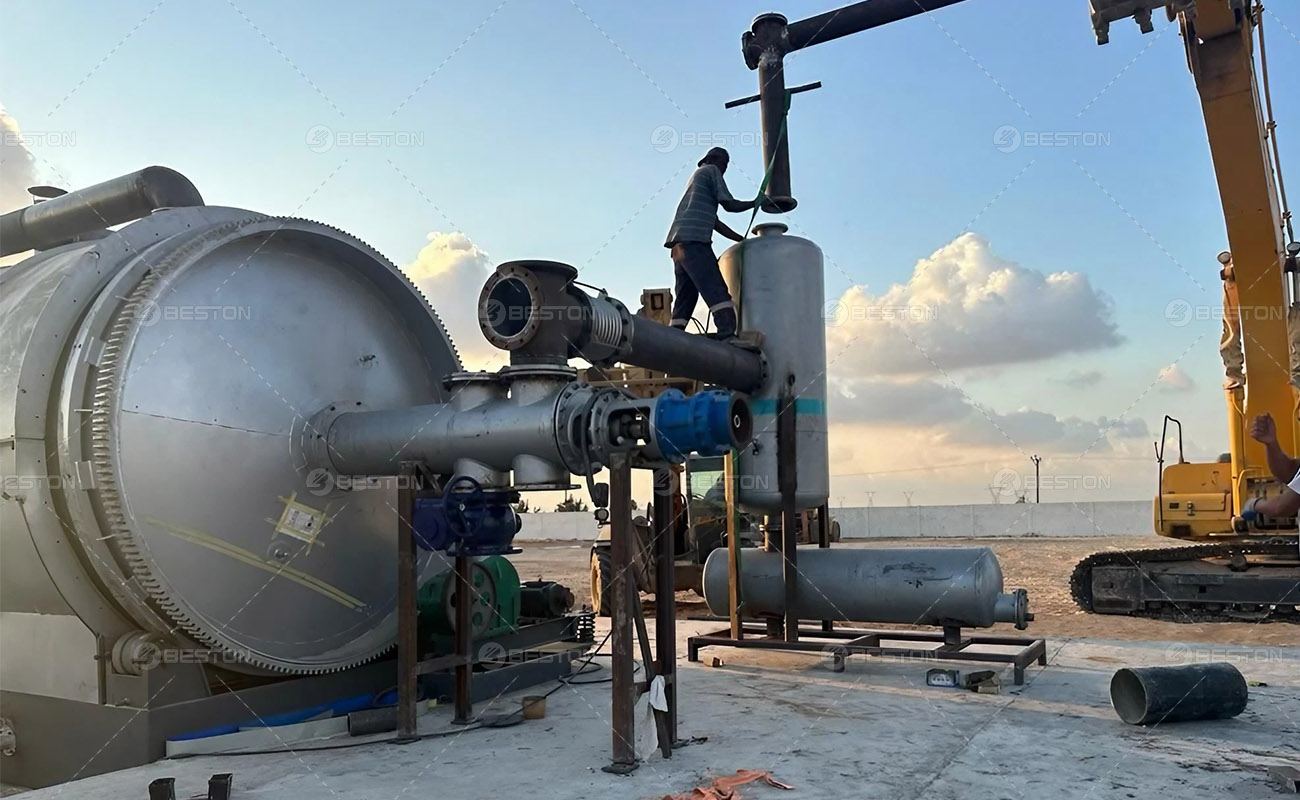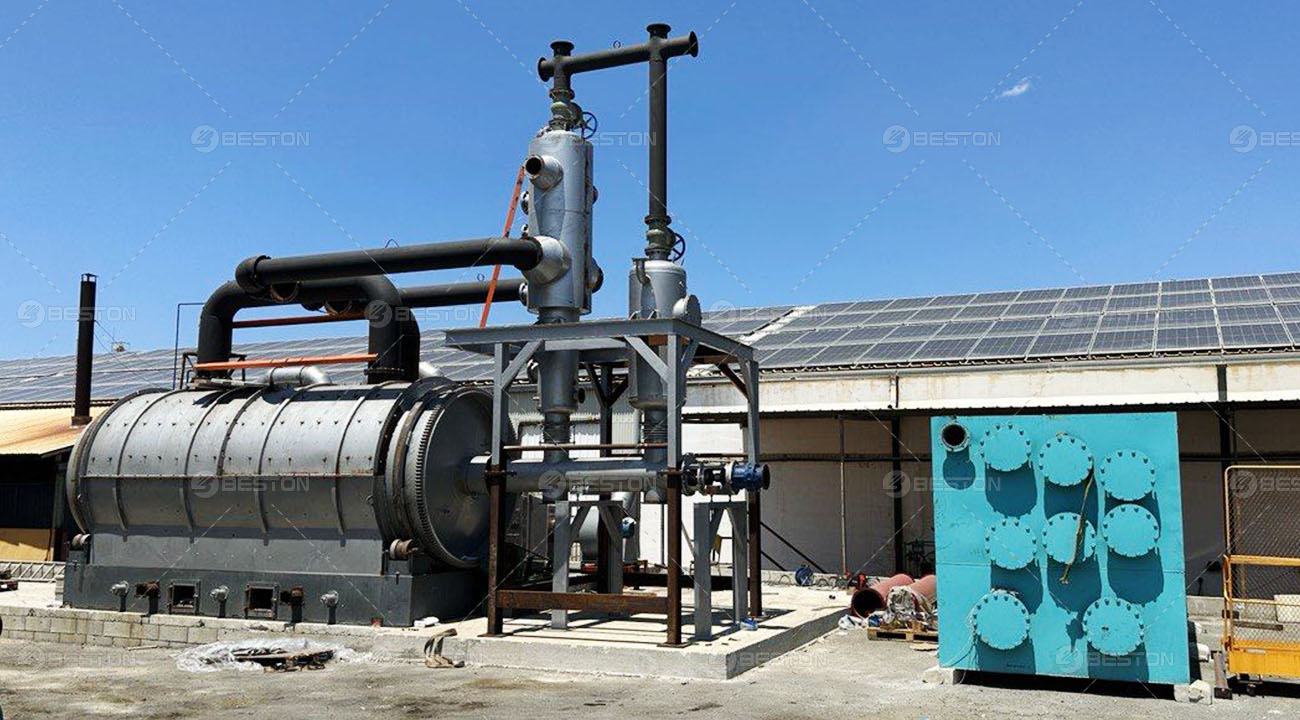In today’s world, where the concern for environmental preservation has never been greater, innovative solutions are continually sought to address the problem of waste disposal. Waste plastic and tyre pyrolysis plants have emerged as a promising technology in the realm of waste management, offering a sustainable approach to dealing with non-biodegradable waste materials. This article delves into the intricacies of waste plastic and tyre pyrolysis, exploring its working principles, feedstock selection, environmental impact, end products, and the challenges and future outlook for this transformative technology.
Working Principles
Pyrolysis Process Explained
Pyrolysis is a thermal decomposition process that breaks down complex organic materials at elevated temperatures in the absence of oxygen. The process can be divided into three crucial stages:
- Heat Initiation: The heat initiation phase involves heating the feedstock to a specific temperature, typically between 300°C to 800°C, depending on the material being processed. This initial heat input triggers the breakdown of long-chain hydrocarbons within the waste.
- Decomposition of Feedstock: During the decomposition of feedstock, the waste plastic or tyre undergoes a transformation. High temperatures cause the material to break down into simpler hydrocarbons, gases, and solid residues.
- Product Formation: The final stage is product formation, where the resulting mixture is condensed and separated into valuable end products such as pyrolysis oil, carbon black, and gases.
Equipment and Components
To facilitate the pyrolysis process efficiently, pyrolysis plant consists of various critical components. These include:
- Reactor: The reactor is the core vessel where the pyrolysis reaction takes place. It must withstand high temperatures and pressure variations during the process.
- Catalysts: Catalysts are substances that can enhance the pyrolysis reaction. They play a crucial role in accelerating the decomposition of feedstock, improving the yield and quality of the end products.
- Condensers: Condensers are used to cool and condense the volatile gases produced during pyrolysis, turning them into liquid form for collection and further processing.

Feedstock Selection
Plastic Waste Composition
Waste plastic materials are diverse, comprising various types of polymers such as polyethylene, polypropylene, and polyvinyl chloride. Understanding the composition is essential, as different plastics have distinct pyrolysis characteristics. Additionally, plastic waste may contain contaminants such as food residues, labels, and other non-plastic components that need to be addressed during processing in the waste plastic pyrolysis plant.
Tyre Waste Composition
Tyre waste is primarily composed of rubber compounds, which contain complex organic polymers. In addition to rubber, tyres often contain steel wires and fabric fibers used for reinforcement. These additional components pose unique challenges and opportunities in the pyrolysis process.
Environmental Impact
Emission Control Technologies
While waste plastic and tyre pyrolysis offer a sustainable waste management solution, they are not without environmental considerations. Emission control technologies, such as scrubbers and gas filtration systems, are essential for reducing the release of harmful gases and particulate matter into the atmosphere.
Energy Efficiency
Energy efficiency is a key factor in evaluating the environmental impact of tyre pyrolysis plant. Many modern facilities incorporate heat recovery systems to capture and reuse thermal energy generated during the pyrolysis process. Additionally, some plants use the generated heat to produce electricity, further enhancing their sustainability.
End Products and Applications
Pyrolysis Oil
Pyrolysis oil, also known as bio-oil, is a valuable product obtained from waste plastic and tyre pyrolysis. It exhibits a complex mixture of hydrocarbons and possesses properties suitable for various industrial applications, including fuel production, asphalt modification, and chemical synthesis.
Carbon Black
Carbon black is a fine black powder formed during the pyrolysis process. It is a valuable material widely used as a reinforcing agent in the manufacturing of tires and rubber products. Additionally, carbon black finds applications in inks, paints, and as a pigment in plastics.
Challenges and Future Outlook
Regulatory Compliance
Compliance with stringent emission standards and waste handling regulations remains a challenge for waste plastic and tyre pyrolysis plants. Ensuring that these facilities meet environmental and safety requirements is vital for their continued operation and acceptance. Beston Group, an experienced manufacturer of pyrolysis equipment, has been committed to providing customers with green and clean solutions. If you have investment needs, you may wish to inform this company.
Technological Advancements
The future of waste plastic and tyre pyrolysis holds promise with ongoing technological advancements. Innovations in advanced catalysis techniques and the integration of waste management systems will likely enhance the efficiency and sustainability of pyrolysis plants, further promoting their adoption in the global waste management landscape.
In conclusion, waste plastic and tyre pyrolysis plants represent a significant stride towards a sustainable and eco-friendly approach to waste management. These plants, operating on the principles of pyrolysis, effectively transform waste into valuable resources, reducing environmental impact while paving the way for a greener future. As technology continues to evolve and regulatory frameworks adapt, waste pyrolysis is poised to play a pivotal role in addressing the global waste crisis.